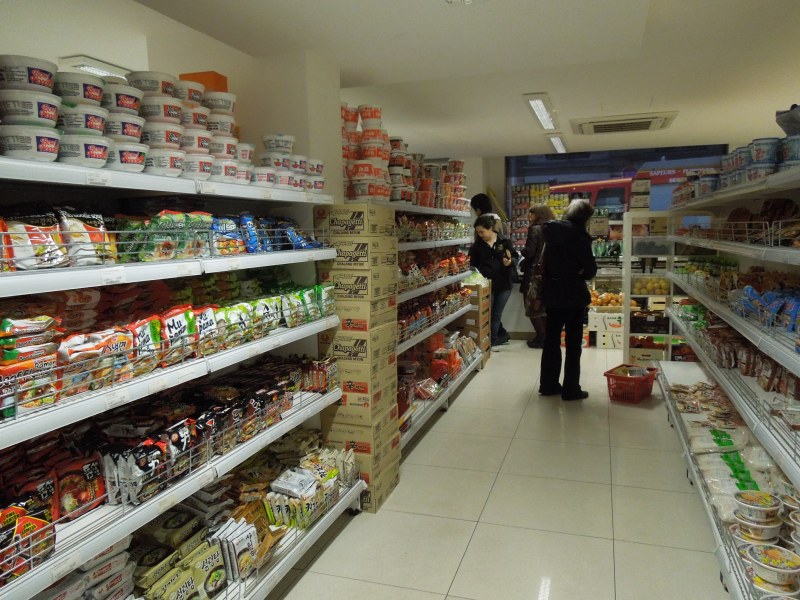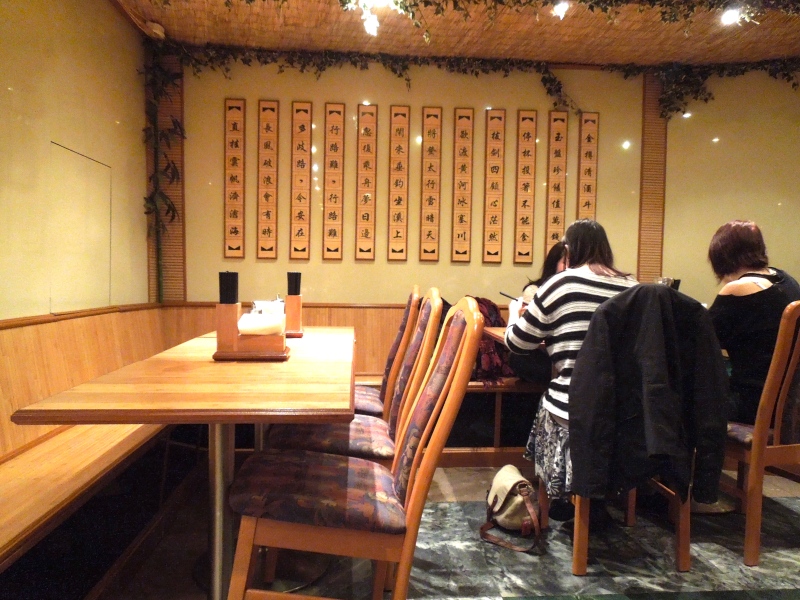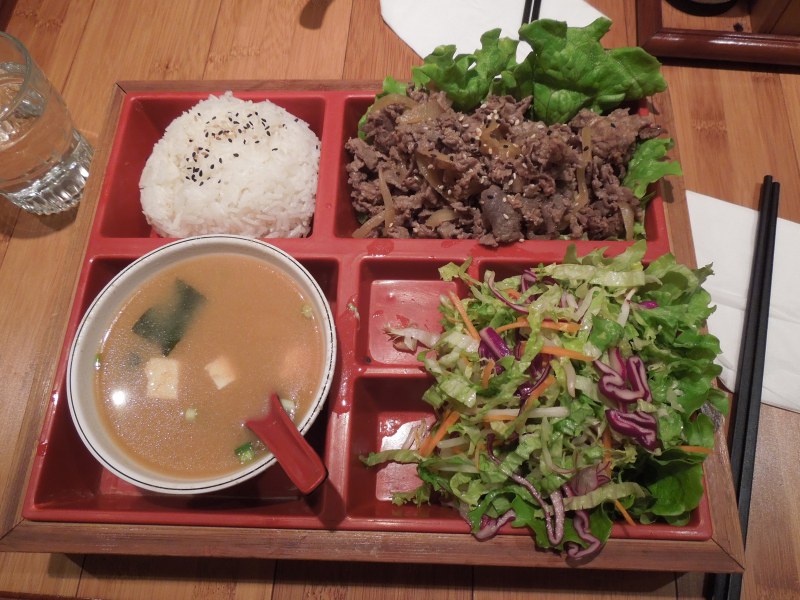This past Sunday, three fellow Korean-American friends and I headed to the Pyramides (pronounced peehr-ah-meed) stop on Lines 7 and 14 of the metro for some comfort food. And by comfort food, I mean Korean food, of course!
We were a little worried about finding a place that was open since it was Sunday, but we found one within 5 minutes of walking around (good thing, cause we were hungry!). Pyramides isn’t actually Paris’s “Koreatown” – that’s apparently near the Commerce/Cambronne stops on Line 8 and 6, respectively, but that trip is for another day. However, K-Mart, a Korean market, is located right by Pyramides.
The restaurant, called 태동관 (Tae Dong Gwan), was actually bigger and more crowded than I expected. The main dining area was full when we walked in, but they had plenty of open tables downstairs, so we were seated right away.
The entire menu sounded enticing – they had everything from 비빔밥 (bibimbap, ‘mixed rice’) to 짜장면 (jjajangmyeon, noodles in black bean sauce). We started off by sharing a 파전 (pajun, green onion pancake), and then I had a 불고기 (bulgogi, grilled marinated beef) set as my main course.
Our server (who was Asian but not Korean) spoke good Korean, so we all used that instead of French. Honestly, it was a relief not to have to think so hard about how to say things. And the meal was incredibly satisfying – great food, and great company.
In general, I’ve noticed that foreign/ethnic cuisine is much more widespread in Paris than in Rome. Though Paris does have a significantly larger immigrant population than Rome, I’ve been kind of surprised at how much I’ve felt the difference in the two weeks I’ve been here – I’ve seen a multitude of ethnic restaurants (and a few speciality markets), and the prices seem pretty reasonable (especially if you go in expecting to pay a bit of a premium). Next stop, Koreatown and Chinatown!




























